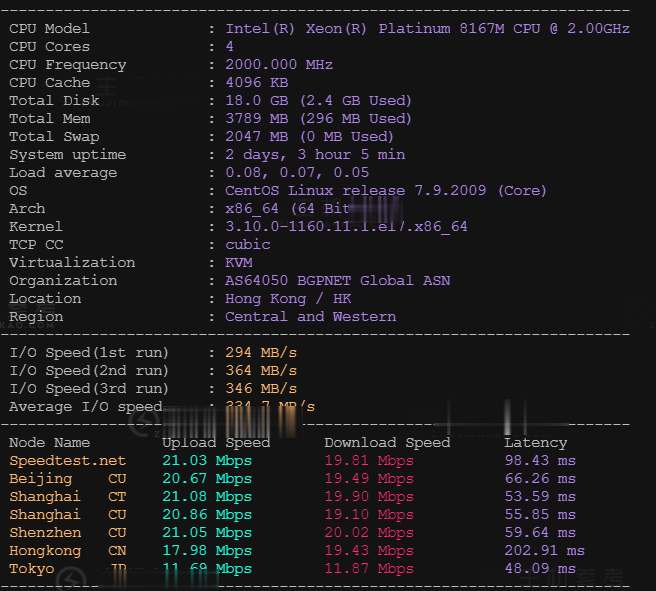equitablesafebase
safebase 时间:2021-05-24 阅读:()
OPENFILEIntroduction—Openingeducationalsystemstoculturaldiversity:InternationalandcomparativeperspectivesAbdeljalilAkkariColleenLoomisPublishedonline:30June2012UNESCOIBE2012KeywordsCulturaldiversityEducationsystemsEducationreformLanguageCurriculumTeachersContemporaryeducationalsystemsthatwelcomeallyoungchildrenregardlessofgender,ethnicity,religion,etc.
rstemergedinEuropeduringthe19thcenturyandthenbecamesharedbymostcontemporarysocieties.
Despitesomeinitialambivalence,schoolingisbecomingglobalized(AkkariandPayet2010).
Ontheonehand,thesechangesreectatleastapartialrealizationofacenturies-olddreamofeducationastheformationofrationalandequalcitizens.
Ontheotherhand,schoolshavebeenconceptualizedfromtheper-spectiveofanationalidentitybasedononecultureandlanguage.
Theschoolhasneverbeenaculturallyneutralplace.
Theworkofteachersintheclassroomisorganizedaroundaculturalbasisforinstructionandlearning,inwhichtheyexplicitlyandimplicitlytransmitalargeamountofculturalinformation.
Insituationswhereteachersandstudentsshareacommoncultureandlanguage,fewculturalbarrierstoeducationexist.
Whenteachersandstudentscomefromdifferentbackgrounds,however,theschoolcurriculumandteachingpracticesmayexcludesomestudentsandfailtosupportthemintheirlearning.
Racismandissuesofpowerareomnipresent.
Educationalsystemsareinextricablylinkedwiththedevelopmentandlivedexperiencesofstudents'culturalidentities.
Giventhisbackground,weseetheneedforfurthercriticalreectionsonthestatusofculturaldiversityineducationsystems.
Whilethisthinkingishardlynew(Banksetal.
1986;Berque1985),ithasbeenconnedmostlywithinnationalspaces.
ThisspecialissuebroadensourthinkingonculturaldiversitywithineducationalsystemstoaninternationalandcomparativeperspectiveusingillustrationsofeducationalinnovationscirculatingA.
Akkari(&)FacultedePsychologieetdesSciencesdel'Education,UniversitedeGene`ve,BoulevardduPont-d'Arve,1211Geneva,Switzerlande-mail:Abdeljalil.
Akkari@unige.
chC.
LoomisDepartmentofPsychology,WilfridLaurierUniversity,75UniversityAveWest,Waterloo,ON,Canadae-mail:cloomis@wlu.
ca123Prospects(2012)42:137–145DOI10.
1007/s11125-012-9234-xaroundtheworld,whichmayserveasmodelsortemplatesforenhancingschools'capacitytoembraceallyoungchildren.
Inthisintroductiontothespecialissuewebeginbyjuxtaposingthepotentialthatschoolingcanoppresswithitspotentialtoliberate.
Next,tobetterunderstandtheseopposingprocesses,wedescribetheroleofcomparativeresearchandthenhighlightthreedimensionsofeducationalsystemsthatshowusboththedifcultiesandtheinterestinopeningeducationalsystemstoculturaldiversity:language,curriculum,andteachers.
Finally,wediscussinmoredetailafourthdimension:thedominanteducationalpolicy,i.
e.
,theteachingmethodspreferredinschools.
Werefertotheextantliteratureandhighlightnewofferingsinthisspecialissue.
Webeginourexplorationofhoweducationalsystemsareopeningtoculturaldiversitybyexaminingtwofacetsoftheschoolingprocess.
Ontheonehand,asBourdieuandPasseron(1977[1970])putitsowell,themodernschoolisaninstrumentofdominationthatperpetuatesandreproduceshiddensocialinequalities.
Individualstudents'relation-shipstoknowledgeandeducationcanbeusedtosortthemaccordingtotheirsocio-culturalproximitytotheschoolculture.
Thisproximityisreectedinthewaystheylearn,speak,behave,andact.
Ontheotherhand,theschoolcontributestotheawarenessandempow-ermentofoppressedgroups.
Analysesofdecolonizationmovementsclearlyshowthataccesstoschoolingisacrucialrstpointintheprocessofliberation.
Ifanyopeningtoculturaldiversityhasoccurredinrecentdecades,ithasbeenpartofalonganddifcultprocessdatingbacktobeforevisiblesignswereevident,anditisstillincomplete.
Despitethedifcultiesandthelongroadstilltobetravelledbeforeschoolsopenseriouslytoculturaldiversity,thetextspresentedinthisissuerevealanotherhorizonofpossibilities.
Issuesofinequalityandsocialinjusticearestillfoundallovertheworld.
Indeed,schoolsoftenfailtoreducethediscriminationsufferedbycertaingroupsasevidencedbysomecountriesthatstilldonotconsiderafrmativeactionpoliciesineducationinordertoaddressinequality.
Whilesomeofthedebatesonthesetopicsseemtobeuniversal,theanswersarealwayslocalandnational—hence,theimportanceofcomparativeandinter-nationalresearch.
Somerecentcomparativestudiesareprovidingevidencethatwillhelpustobetterunderstandtherolethatcultureplaysineducation.
Bycombiningdetailedanalysesacrossthelocal,national,andinternationallevels,thesestudiesstrengthenthelegitimacyofthecomparativeperspective.
Therelationshipbetweendiscourseandthenationalintegrationmodelsandlogicsatworkwithinschoolsandclassroomshasalsoattractedtheattentionofresearchers.
OnesuchstudycontainedinthisissueisDianeGerin-Lajoie'sarticleonCanadianschoolsinmonolingualEnglishschoolboards.
Recently,researchershavecap-italizedonnationalexperiencestoidentifythefactorsthatfavourtherecognitionandenhancementofculturaldiversityineducationsystems,andhavespecicallyrecognizedtheculturaldiversityofindigenouspeoples.
Itseemsobviousthatmorecomparativeresearchonthisproblemisusefulbecauseitallowsustocontrasttheresultsofresearchonthistopicandbecausewecanuseourmethodologiestocompareandidentifyinnovativepracticesthatmaybetransferredfromonecontexttoanotheroreveninternationally.
Moreover,researchersintheSouth,especiallyLatinAmericaandAsia,haveproducedoriginalstudiesthatdeservetobesharedbyresearchersbasedinEuropeorNorthAmerica.
Thesestudieshighlightfourcriticaldimensionsofeducationalsystems:language,cur-riculum,teachers,andeducationalpoliciesandpractices.
Considerrstthelanguageofinstructionatschool.
Withfewexceptions,educationsystemsarestillgovernedbymonolingualpractices.
Observerspointoutthatthechoiceoflanguagesusedinschoolingisnotonlyrelevanttothechild'smothertonguebutalsothat138A.
Akkari,C.
Loomis123bilingualismhascognitivebenets(AkkariandLoomis1998).
Usingachild'srstlan-guage(theonespokenathomewithparentsandcommunity)ininstructionduringtheearlyyearsofeducationhascognitivebenets(Cummins1979).
Conversely,whenthehomelanguageisdifferentfromthelanguageofinstruction,specicpedagogicalandcognitiveproblemsresult(Klein1994).
Theimportantrolethatlanguageplaysinwelcomingstu-dentsisillustratedinthisissuebythecasesofmonolingualschoolsinCanada(Gerin-Lajoie)andstudentsinaninternationalschoolinBrazil(NigelBagnall).
Still,evidencepointstotheneedforcautionaroundeducationalreformsthataddressonlylanguageissuesbecauseitispossibletoperpetuateorrecreateeducationalsystemsthatremainclosedtoculturaldiversity.
AsSuseelaMalakolunthuandNagappanRengasamydescribeinthisissue,thiswasthecaseinMalaysia,wherechangesweremadetousetheindigenouslanguagebutotheraspectsofeducationretainedthecolonialpractices.
TheseauthorsreportontherichandcomplexhistoryoftheinterplayamongtheMalay,Mandarin,andTamillanguagesaswellasEnglishandotherforeignlanguagestaughtassecondlanguagesinschools.
Aconsistentthemeisthat,ifeducationalsystemsaretobeopenedtoculturaldiversity,issuesaroundlanguage,curriculum,teachers,andeducationalpoliciesmustbeaddressedsimultaneously.
Second,considercurrentapproachestothecurriculum.
Thatis,whatisregardedaslegitimateknowledgetobetransmittedtofuturegenerationsIfnegativeandstereotypicalrepresentationsofcertainculturesarenowlesscommonintextbooks,wearestillfarfromseeingequitablerepresentationofallculturesintheclassroom.
SerpellandGanapathy(2002)showedthatwhenteachersintrainingwereofferedamulticulturalclasswithamulticulturalcurriculum,theycouldconfronttheirownethnocentrismanddevelopintel-lectualdiversityamongtheirexperiences.
Thisapproachcanallowminorityteacherstoaddressissuestheyrarelyhavetheopportunitytodiscussduringtheirtrainingsuchasracism,discrimination,andculturalduality.
Inthisissue,HalimaAit-Mehdishowsus,throughstudentaccounts,thatacriticalareatoaddressinFrenchschoolsistheteachingofthehistoryofcolonizationanddecolonization,whichremainsFranco-centric.
Changestothecurriculumareneededtomakethecontentrelevanttostudents'experiencesofmigrationandthepluralisticsocietyofFrance.
AndMalakolunthuandRengasamyshowhowtheMalaysiancurriculumatdifferenttimesinhistoryhaseitherreinforcedracialdifferencesorfosteredracialunityattheschoollevelthrough,forexample,theVisionSchoolortheStudentIntegrationPlanforUnity.
Also,thearticleinthisissuebyAbdeljalilAkkarionradicaleducationalreformsinBrazilprovidesconcreteexamplesofcurriculumcontentchangesthatintegrateantiracistandinclusiveeducationwithcitizenshipeducation.
Bagnallalsoshowsthatwithininternationalschoolswithstudentsfromseveralcultures,somestudentsdevelopaglobalidentityandothersdonot,suggestingthatthereisroomforcurriculumchangesthatcanteachthesestudentshowtheirlivesareinterconnectedwithothers'lives.
Third,teachersareonepillaroftheeducationalsystemandplayacentralroleinpromotingculturaldiversity.
AsAkkaridescribes,membersofculturalminoritygroupsareunderrepresentedonteachingstaffs.
Moreover,theinterculturaldimensionoftheirinitialandongoingtrainingremainssmall(e.
g.
,Akkari,Loomis,andBauer2012).
Therstchallengetodayinteachereducationandtrainingistocreatelearningenvironmentsthatmaintaintheculturalintegrityofeverychildwhileincreasingtheiracademicachievement(WlodkowskiandGinsberg1995).
AsGerin-Lajoiepointsout,teachersneedmoreedu-cationandpreparationtoworkwithstudentswhoarenotbeinginstructedintheirrstlanguage;thispreparationneedstobeexpandedtoincludeallteacherswhowillteachstudentsinasecondlanguage.
Further,becauseteachersareclosetostudents,theyareOpeningeducationalsystemstoculturaldiversity139123strategicallypositionedtoprovideexperiencesthatallowallchildrentomaintaintheirculturalintegrityandgainanappropriateeducation.
Drawingoninternationalresearch,Akkarishowsushowteacherscanchangetheirworkbyactingascatalystsinopeningeducationalsystemstoculturaldiversitythatwilldrivetheneededreformsinteachereducationandtraining.
Finally,wemovetoafourthissue,discussingitinslightlymoredetail:thedominanteducationalpoliciesandpracticesthatinuencehowschoolsystemscanbeopenedtoculturaldiversity.
Herewefocusontheteachingmethodsthatbothsystemsandteachersprefer.
Wehavechosentoelaboratethispointbecauseallobserversofcontemporaryeducationalsystemsagreethatthetreatmentofculturaldiversityisachallengeforedu-cationalpolicies.
Manyinternationalorganizations,includingUNESCOandtheCouncilofEurope,focustheirprogrammes,projects,andactionsonthisissue.
Theseorganizationsalsocontributetodisseminatinginterculturalapproachesineducationworldwide.
Amongtheeducationalpracticesthatcanembodyeithermonoculturalismorculturaldiversityareinstructionalandclassroommanagementstrategies,includingteachers'assessmentsofstudents.
Wenote,forexample,thatindividualsfromprivileged,powerful,anddominantgroupscomprisemostoftheteachingcorpsaroundtheworld,buttheyareinfactanumericalminorityoftheworld'spopulation.
Thusteachersbelongtothe''minorityworld''(DasenandAkkari2008).
Intheminorityworld,writtencommunicationisvaluedasmorelegitimatethanoralcommunication,andmeasurableskills(valuedineconomicterms,suchasmathematicalknowledge)takeprecedenceoversocialskills(solidarity,citizenship).
Thedistancebetweeneducationalpracticesandstudents'culturesisinverselyrelatedtostudents'academicachievement;astheculturaldistanceincreases,studentsarelesslikelytoachieveacademically.
Thisobservationsetsupadilemmaofus-versus-themandraisesquestionsabouthowtopromoteculturaldiversityineducationalpoliciessothatallchildrencansucceedinschool.
Researchndingssuggestthatstudentsfromculturallydiversegroupsachievemoreinschoolifschoolsandteachersensurethatbothinstructionandclassroommanagementaresensitivetothestudents'culturalbackgrounds.
ScholarsworkingwithintherealmofAnglo-Saxoneducationalresearchhavecoinedseveraltermsthatreectthisstrategy:thecultural(dis)continuitytheory(JacobandJordan1987),culturallyappropriateeducation(AuandKawakami1994),culturallysensitiveteaching(Novick1996;Phuntsog1999),andculturallyrelevantteaching(Ladson-Billings1990).
Attheclassroomlevel,culturallysensitiveeducationessentiallymeansthatteachersusetheirstudents'culturalexperiencestohelpthemlearn.
Butthatisnotenough.
Educatorsmustalsoincreaselearners'senseofschoolknowledge:thestandards,procedures,andstructuresthatenhanceandrenethecomplexityofwhattheylearn.
Thisalsoincludestheschool'svaluesandgoals,whichhelpstudentstoformacriticalconscience.
WlodkowskiandGinsberg(1995)deneeducationasaculturallysensitiveadaptationtothedynamiccombinationofmultiplevariablesrelatedtofamily,ethnicity,class,gender,region,andreligion.
Allthesevariablescon-tributetotheculturalidentityofeachstudentandhisorhergroupmembership.
Alongthesamelines,Huber(1991)pointsoutthevalueofteachingapproachesthatidentifytheinuencesofculture,language,ethnicity,gender,religion,exceptionality,socioeconomics,andfamilyenvironment;thisawarenesscanreducetheculturaldiscontinuitybetweenthestudent'sethniccultureandtheschoolculture.
Cummins(1986)arguesthattherelationsofpowerandstatusbetweenminorityandmajorityintheworldoutsidetheclassroomhaveanimportantinuenceonschoolper-formance.
Animportantelementofhisthesisisthat,becauseoftheirinteractionswiththedominantgroup,minoritystudentsfeelinsecureandambivalentaboutthevalueoftheir140A.
Akkari,C.
Loomis123ownculturalidentity,andthisaffectstheirschoolperformance.
Teacherswillbebetterabletochangethisrelationshipiftheyexaminetheirownbeliefsandpersonalvaluesandrecongurethewaystheyinteractwithstudentsfromethniccommunities.
AccordingtoDelpit(1995),amonoculturalfacultyislikelytotakemostdecisionsbasedontheexpe-riencesofWhitepeopleandtheirbeliefsystems.
ThishappensnotbecauseWhiteteachersareuninterestedinminoritystudents,butbecauseasindividualsweallbaseourinter-pretationsoftheworldonourownlifeexperiences.
Datacollectedbythe''EScol''(EducationScholarisation)team,foundedin1987inFrancebyBernardCharlot,clearlyshowhowimportantculturalfactorsareinbeginningtodevelopstudents'relationshiptoknowledge(Bautier,Charlot,andRochex2000).
Theirworkonstudents'relationshiptoknowledgeandsenseoftheschoolexperiencehasshownthateveryonehasarelationshipwithknowledge(ortheactoflearning)andthattherelationshiphastwodimensions,whichtheycallidentityandepistemic.
Theindividual'sidentityconsistsofasetofbenchmarks,goals,andpracticesthepersonengageswithovertime;theyarereectedintheperson'srelationshiptoknowledge.
Itisalsoappropriatetospeakofagroupdimensionofthisrelationship,asindividuals'relationshipstoknowledgeemergefromtherelationshiptoknowledgeofthegroupstheybelongto.
Thustheidentitydimensionisthewayknowledgetakesonmeaningaspeoplerefertomodels,expectations,beliefs,values,andreferencesinanticipationoftheirfuturelives.
Theepistemicdimensionisdenedbyeachperson'sreferencestowhattheyexperienceastheactoflearningandknowing.
AsDelpit(1995)stated,whenweteachacrossboundariesofrace,class,andgender—whichistherealitywhenweteach—wemustidentifyandovercomethepowerdiffer-entials,stereotypes,andotherbarriersthatpreventusfromseeingeachotherasbothteacherandlearner.
Theseeffortsshouldguideteachertraining,schoolcurriculumdevelopment,instructionalstrategies,andeveryaspectoftheeducationalprocess.
Untilwecanseetheworldasothersseeit,atleastpartially,alltheeducationalreformsintheworldwillfail.
Thus,addressingculturaldifferences(i.
e.
,culturaldiversity)isessentialtoanyteachingapproach.
Itseemsobviousthatculturallyappropriateeducationallowsteacherandstudenttoconstructapedagogicalrelationshipthatinvolvesnotsubmissiontotheother,butwillingnesstosubmittoanexchangewiththeother(Meirieu1993).
GewirtzandCribb(2011)suggestedacriticalversionofmulticulturalism:Moresophisticatedapproachesstartfromananti-essentialistposition.
Theyaimtoresistmakingassumptionsaboutpeople'sidentities,andratherseektoengageactivelyandcontinuouslywiththeidentityprojectsoflearnersbytalkingwithandlisteningtothem.
Underlyingthispositionarethebeliefsthat(a)ifweareinterestedinafrmingpeople'sactualidentities—i.
e.
whotheythinktheyare—ratherthaninrelatingtothemthroughourowncategorizationsandgeneralizations,thenwehavetotreatthemasindividuals,notcategories,andthisinvolvesbeingreadytolistentoandlearnfromthem;and(b)thediscerningofpeople'sactualidentitiesisnotsomethingthatcanbedoneonaone-offbasisbecause,aswehavediscussed,identitiesarenotxedbutareuidandhybrid,andevolveandarenegotiatedovertime.
(p.
144)Culturallyappropriateeducationisatermthathasemergedfromtheanalysisofmanyethnographicstudiesofteachersworkingininterculturalsettingsinurbanandethnicallydiversecommunitiesaroundtheworld.
Thetermreferstotheinclusionofeducationappropriateforstudentswhosedailylivesrequireworkingwithagriculturalcropsasawaytoenhancestudents'ethno-culturalidentityandboosttheiracademicachievementOpeningeducationalsystemstoculturaldiversity141123(Osborne2001).
Gay(2002)saysthatlearningculturallyappropriateusesofthecharacteristics,experiences,andperspectivesofstudentsfromvariousethnicgroupsisapriorityinanyframeworkforteaching.
Whenschoolcontentsareframedfromthestudents'perspectives,theirlearningexperiencesbecomemoremeaningfulandinterestingandthereforelessonsareeasiertoabsorb.
Culturallyappropriateeducationincludesseveralspecicefforts:educatorsmustdevelopaknowledgebaseonculturaldiversity,integrateculturalandlinguisticdiversityintothecurriculum,expressapermanentconcernforthelivesofallstudentsandforbuildinglearningcommunities,andcommunicatewithstudentsinwaysthatreectculturaldiversity.
OnespeciccomponentinpreparingforandpracticingculturallyappropriateeducationistoconsiderwhatGay(2002)callsthemodalitiesofparticipationindiscourse.
Thedominantcommunicationstyleinschoolscanbecharacterizedasreceptiveandpassive;incontrastmanysocialandethnicgroupsuseamoreparticipativestyleofcommunication.
Intherststyle,thespeakerisactiveandcommunicationisdidactic(methodical).
Thereceiverispassive.
Thus,studentsareexpectedtolistenquietlyandcarefullywhiletheteacherspeaks.
Theycannotspeakduringthekeymomentswhentheirthoughtsarise,butrathermustwaittorespondatatimeorchestratedbytheteacher.
Generally,theteachersseektheirparticipationbyaskingquestionsofparticularstudents.
Thesequestionsrequirefactualanswers,correctanswers.
Incontrast,thecommunicationstylesofmanyethnicgroupsaremoreactive,participatory,multi-modal,anddialectical.
Speakersexpectthatlistenerswillengagewiththemastheytalk,providingtimelyfeedbackandcomments.
Therolesofspeakerandaddresseeareuidandinterchangeable.
AfricanAmericans,forexample,refertothisstyleofcommunicationascallandresponse.
Ofcoursethesedifferingstyleshaveconsequencesintheclassroom.
Theycanbeproblematicforbothteachersandstudents.
Teachersusingtherststyleviewstudentsusingthesecondstyleasdiscourteous,disruptive,andinappropriate.
Theyoftentakeactiontosilencethem.
Whenteachersbantheuseofstudents'speech,theymayalsoreducestudents'responses,thusdashingtheirintellectualengagementandtheireduca-tionalefforts.
Asteachersorteachereducators,wecanprobablyallrecallexamplesofthesedifferentcommunicationstyles.
Wecanalsomeasurehowdifcultitistoletgoofthestylethatourprimaryandsecondarysocializationledustofocuson,orourpreferredstyle.
TheViewpointinthisissuebyStevenVanHookreportsonastudydesignedtounderstandwhetherparticularthemesandimagesthattranscendculturaldimensionsmaybeusedinteachingastudentbodywhosestudentscomefrommanycultures.
Theresearchparticipantswerestudentsenrolledinaninternational,university-levelbusinesscourse.
VanHookaimstondawayto''makeculturaldifferencesasecondaryconcern''intheclassroom.
Althoughthisgoalstandsincontrasttotheobjectivesofthisspecialissueasawhole,hisndingsanddiscussioncontributetomulticulturaleducationalpoliciesandpractices.
Oneconclusiontheauthordrawsisthatteachersmightavoidusingcontentrelatedtohumour,nationalism,sex,andreligioninmulticulturalclassroomsandinsteadusethemesthatreectthedynamicsofinterpersonalrelationships,andimagesrelatedtosportsandbabies.
Theideaofmakingculturaldifferencesasecondaryconcerniscontroversial.
Thisgoalisbasedinabeliefthatdifferencesareariskorprobleminlearningandcankeepstudentsfromgainingknowledgeaboutmultiplecultures.
Itraisesmanyquestions.
Forexample,shouldweavoidexplicitlyaddressingreligiousdifferencesintheclassroom,orisitanimportantpartofeducationtoapproachallreligionswithacriticallensOntheotherhand,aninitiallytransculturalapproachmayprovideasafebaseforculturallyrelevantteaching.
142A.
Akkari,C.
Loomis123Thatis,bybeginningwithmaterialthatseemstotranscendmanycultures,teachersmayprovideasecurebaseforinitiatinginterculturalinteractionsthatcanlaterfacilitatemorein-depthculturalexplorationsandunderstandingsthatarefundamentaltointellectualandidentitydevelopment.
Althoughitwasnotpartofthestudyreportedhere,VanHookraisesanimportantquestionaboutthedominantrolethattheEnglishlanguageplaysininter-nationalbusinesseducation.
Bothoftheseissues,transculturalismandlanguageofinstruction,haveimplicationsforeducationalpracticesandpolicies.
ThecasestudybyGregBurnettandGovindaLingamanalyzestrendsingraduateeducationinthePacicregionwithagoalofunderstandingstudents'worldviewsasreectedintheirtheses.
Becausestudentscomefromandreturntovariedanddifferentculturalsettings,theyarekeystakeholdersineithermaintainingthestatusquoorcon-tributingtosocialtransformation.
Theauthorssystematicallyanalyzedgraduatestudiesconductedbetween1968and2009,placingthemintoLather's(2006)typologyofresearchparadigms:(i)positivist,(ii)positivist/interpretivist,(iii)interpretivist,(iv)interpretivist/emancipationist,(v)emancipationist,(vi)emancipationist/deconstructivist,and(vii)de-constructivist.
Theyalsoexaminedthepopulationsandissuesthatwerethetargetoftheseprojects.
TheyfoundanimbalanceoffocusbetweenFijian(75%)andIndo-Fijianresearch.
Lookingattheresearchparadigm,theyfoundthatmostofthisworkisinterpretivist,followedbyinterpretivist/emancipationist.
Theyconcludethatalackofdeconstructivistworldviewsinthisresearchlimitsthepossibilitiesfortransformationandthatissuesofaccessandequityhavenotbeenaddressedtodate.
Thiscaseraisesanimportantquestion:HowwellisuniversityeducationinthePacicplacedtosupportstudentsinlearningandapplyingadeconstructivistworldviewthatcancontributetosocialtransformationInterestingly,thisarticletouchesonNewZealand'suseoflanguagesintheclassroomandthewaysthatteachers'culturalpositionsimpactstudents'developmentofcriticalthinkingskills.
ItalsoprovideshistoricalcontextforpoliciesandpracticesinthePacicRim.
Thiscaseraisescomplexissues;thus,itisoftenconsistentwithpointsmadebyotherauthorsinthisvolume,whilesometimescallingtheirpointsintoquestion.
Inthisspecialissueeacharticleaddresseshistoricalartifacts,andnationalandeduca-tionalpoliciesthatimpacttheopeningofeducationalsystemstoculturaldiversity.
Theyillustratetheneedtogroundeducationalreformnotonlywithinaframeworkofhistory,laws,andpoliciesbutalsointeachers'actionsintheclassroomandrelationshipswithstudents.
Theseauthors'worksshowthatlanguagepoliciescannotstandindependentofculturalpoliciessuchasthemulticulturalisminCanadadescribedbyGerin-Lajoie.
Mal-akolunthuandRengasamy'sworkinMalaysiathatexplainstheevolutionofeducationalpoliciesimpactingculturalinclusivityfromtheperiodofindependencefromBritishrulein1959throughtheNewEconomicPolicyin1970toaneweducationalphilosophypro-claimedbytheMinistryofEducationin1989andonwardthroughtheNationalVision2020.
Effortstoaddressnationallanguagesandofciallanguagesofinstructionhaveresultedinmulticulturaleducationalpolicies.
ThecasesinBrazil,ofpublicschoolsdescribedbyAkkariandaninternationalschooldescribedbyBagnall,identifymanyofthechallengesinopeningeducationalsystemswithinaconservativecontextandofferspecicstrategiesforaddressingobstacles.
Suggestionsforeducatingindigenousteachers,andimplementingpositiveandethnicquotasinsomeinstitutions,highlightinternationalapproachesthathavebeenadaptedtolocalcontexts.
InthecaseofCanada(Gerin-Lajoie)welearnfromthechallengesoflinkinglocalprovincialschoolpoliciestofederalpoliciesconcerningthetwonationallanguagesandtherightsofAboriginalpeoples.
Insummary,allapproachesthatseriouslyconsidertheroleofcultureineducationalprocessesarebasedontwoassumptions.
First,theyseethelanguages,cultures,anddiverseOpeningeducationalsystemstoculturaldiversity143123perspectivesofstudentsasessentialresourcesandnotasrisksorproblems.
Second,theyemphasizethatallformsofschoolingareculturallyandpoliticallyconstructedasahistoricalproductofparticulargroupswithparticularinterestsandvaluesspecictoaparticularmomentinthehistoryofasociety.
ReferencesAkkari,A.
,&Loomis,C.
(1998).
Towardanewunderstandingoflanguageminoritystudents'experiencesofbilingualeducationintheUnitedStates.
BulletinSuissedeLinguistiqueAppliquee,67,31–59.
Akkari,A.
,Loomis,C.
,&Bauer,S.
(2012).
FromaccommodatingtousingdiversitybyteachersinSwit-zerland.
TheJournalofMulticulturalisminEducation,7(1),1–11.
Akkari,A.
,&Payet,J.
-P.
(2010).
Transformationsdessyste`meseducatifsdanslespaysduSud.
Entreglobalisationetdiversication[Transformationsofeducationsystemsindevelopingcountriesbetweenglobalizationanddiversication].
Bruxelles:DeBoeck.
Au,K.
,&Kawakami,A.
(1994).
Culturalcongruenceininstruction.
InE.
Hollins,J.
King,&W.
Hayman(Eds.
),Teachingdiversepopulations:Formulatingaknowledgebase(pp.
5–23).
Albany:StateUni-versityofNewYorkPress.
Banks,J.
,&Lynch,J.
(Eds.
).
(1986).
MulticulturaleducationinWesternsocieties.
London:Holt,Rinehart&Winston.
Bautier,E.
,Charlot,B.
,&Rochex,J.
-Y.
(2000).
Entreapprentissagesetmetierd'ele`ve:Lerapportausavoir[Betweenlearningandtheirroleasstudents:Therelationshiptoknowledge].
InA.
VanZanten(Ed.
),L'ecole,l'etatdessavoirs(pp.
179–188).
Paris:LaDecouverte.
Berque,J.
(1985).
L'immigrationa`l'ecoledelaRepublique:rapportauministredel'educationnationale[ImmigrationwithintheschooloftheRepublic:ReporttotheMinisterofNationalEducation].
Paris:LaDocumentationFrancaise.
Bourdieu,P.
,&Passeron,J.
-C.
(1977[1970]).
Reproductionineducation,societyandculture.
TranslatedbyRichardNice.
London:SagePublications.
Cummins,J.
(1979).
Cognitive/academiclanguageprociency,linguisticinterdependence,theoptimalagequestionandsomeothermatters.
Toronto:OntarioInstituteforStudiesinEducation.
Cummins,J.
(1986).
Empoweringminoritystudents:Aframeworkforintervention.
HarvardEducationalReview,56(1),18–36.
Dasen,P.
,&Akkari,A.
(Eds.
)(2008).
Educationalideasfromthemajorityworld.
Delhi:SageIndia.
Delpit,L.
(1995).
Otherpeople'schildren.
NewYork:TheNewPress.
Gay,G.
(2002).
Preparingforculturallyresponsiveteaching.
JournalofTeacherEducation,53(2),106–116.
Gewirtz,S.
,&Cribb,A.
(2011).
Understandingeducation:Asociologicalperspective.
Cambridge,UK:PolityPress.
Huber,T.
(1991,October).
Restructuringtoreclaimyouthatrisk:Culturallyresponsiblepedagogy.
Paperpresentedatthe13thannualmeetingoftheMid-WesternEducationalResearchAssociation,Chicago.
(ERICDocumentNo.
ED341655).
Jacob,E.
,&Jordan,C.
(1987).
Movingtodialogue.
AnthropologyandEducationQuarterly,18(1),259–261.
Klein,G.
(1994).
Theneedtomaintainmothertongues.
DieSuid-Afrikaan(specialissueoneducation).
Ladson-Billings,G.
(1990).
Culturallyrelevantteaching:Effectiveinstructionforblackstudents.
TheCollegeBoardReview,7(15),20–25.
Meirieu,P.
(1993).
L'enversdutableau[Behindtheblackboard].
Paris:ESFediteur.
Novick,R.
(1996).
Developmentallyappropriateandculturallyresponsiveeducation:Theoryinpractice.
Portland,OR:NorthwestRegionalEducationalLaboratory.
(ERICDocumentNo.
ED397985).
Osborne,B.
(Ed.
).
(2001).
Teaching,diversityanddemocracy.
Melbourne:CommonGround.
Phuntsog,N.
(1999).
Themagicofculturallyresponsivepedagogy:Insearchofthegenie'slampinmulticulturaleducation.
TeacherEducationQuarterly,26(3),97–111.
Serpell,R.
,&Ganapathy,H.
(2002).
ChallengingWesternhegemonythroughsystematicstudyofculturaldiversity:Anundergraduatecourseonchilddevelopment.
Baltimore:UniversityofMaryland,Balti-moreCounty.
Wlodkowski,R.
J.
,&Ginsberg,M.
B.
(1995).
Aframeworkforculturallyresponsiveteaching.
EducationalLeadership,53(1),17–21.
144A.
Akkari,C.
Loomis123AuthorBiographiesAbdeljalilAkkari(TunisiaandSwitzerland)isprofessoranddirectorofaresearchgrouponinternationaleducationattheUniversityofGeneva.
HeisalsoaregularconsultantforUNESCOandotherinternationalorganizations,andwasthedeanforresearchattheHigherPedagogicalInstituteHEP-BEJUNEinBienne,Switzerland.
Hismajorpublicationsincludestudiesoneducationalplanning,multiculturaleducation,teachertraining,andeducationalinequalities.
Hiscurrentresearchinterestsfocusonteachereducationandreformsofeducationalsystemsinacomparativeandinternationalperspective.
ColleenLoomis(UnitedStatesandCanada)isaseniorsocialscientistattheUniversityofGenevaintheFacultyofPsychologyandEducationSciencesandanassociateprofessoratWilfridLaurierUniversityinWaterloo,Ontario.
Herresearchfocusesonhowschoolsandcommunitiesworktogethertoensureequalityinqualityeducation,particularlyforpersonslivinginpoverty,membersofmulticulturalgroups,andimmigrants.
Herworkissituatedattheintersectionofthedisciplinesofpsychologyandeducationandisbasedinbothecologicalandmulticulturalframeworks.
Openingeducationalsystemstoculturaldiversity145123
rstemergedinEuropeduringthe19thcenturyandthenbecamesharedbymostcontemporarysocieties.
Despitesomeinitialambivalence,schoolingisbecomingglobalized(AkkariandPayet2010).
Ontheonehand,thesechangesreectatleastapartialrealizationofacenturies-olddreamofeducationastheformationofrationalandequalcitizens.
Ontheotherhand,schoolshavebeenconceptualizedfromtheper-spectiveofanationalidentitybasedononecultureandlanguage.
Theschoolhasneverbeenaculturallyneutralplace.
Theworkofteachersintheclassroomisorganizedaroundaculturalbasisforinstructionandlearning,inwhichtheyexplicitlyandimplicitlytransmitalargeamountofculturalinformation.
Insituationswhereteachersandstudentsshareacommoncultureandlanguage,fewculturalbarrierstoeducationexist.
Whenteachersandstudentscomefromdifferentbackgrounds,however,theschoolcurriculumandteachingpracticesmayexcludesomestudentsandfailtosupportthemintheirlearning.
Racismandissuesofpowerareomnipresent.
Educationalsystemsareinextricablylinkedwiththedevelopmentandlivedexperiencesofstudents'culturalidentities.
Giventhisbackground,weseetheneedforfurthercriticalreectionsonthestatusofculturaldiversityineducationsystems.
Whilethisthinkingishardlynew(Banksetal.
1986;Berque1985),ithasbeenconnedmostlywithinnationalspaces.
ThisspecialissuebroadensourthinkingonculturaldiversitywithineducationalsystemstoaninternationalandcomparativeperspectiveusingillustrationsofeducationalinnovationscirculatingA.
Akkari(&)FacultedePsychologieetdesSciencesdel'Education,UniversitedeGene`ve,BoulevardduPont-d'Arve,1211Geneva,Switzerlande-mail:Abdeljalil.
Akkari@unige.
chC.
LoomisDepartmentofPsychology,WilfridLaurierUniversity,75UniversityAveWest,Waterloo,ON,Canadae-mail:cloomis@wlu.
ca123Prospects(2012)42:137–145DOI10.
1007/s11125-012-9234-xaroundtheworld,whichmayserveasmodelsortemplatesforenhancingschools'capacitytoembraceallyoungchildren.
Inthisintroductiontothespecialissuewebeginbyjuxtaposingthepotentialthatschoolingcanoppresswithitspotentialtoliberate.
Next,tobetterunderstandtheseopposingprocesses,wedescribetheroleofcomparativeresearchandthenhighlightthreedimensionsofeducationalsystemsthatshowusboththedifcultiesandtheinterestinopeningeducationalsystemstoculturaldiversity:language,curriculum,andteachers.
Finally,wediscussinmoredetailafourthdimension:thedominanteducationalpolicy,i.
e.
,theteachingmethodspreferredinschools.
Werefertotheextantliteratureandhighlightnewofferingsinthisspecialissue.
Webeginourexplorationofhoweducationalsystemsareopeningtoculturaldiversitybyexaminingtwofacetsoftheschoolingprocess.
Ontheonehand,asBourdieuandPasseron(1977[1970])putitsowell,themodernschoolisaninstrumentofdominationthatperpetuatesandreproduceshiddensocialinequalities.
Individualstudents'relation-shipstoknowledgeandeducationcanbeusedtosortthemaccordingtotheirsocio-culturalproximitytotheschoolculture.
Thisproximityisreectedinthewaystheylearn,speak,behave,andact.
Ontheotherhand,theschoolcontributestotheawarenessandempow-ermentofoppressedgroups.
Analysesofdecolonizationmovementsclearlyshowthataccesstoschoolingisacrucialrstpointintheprocessofliberation.
Ifanyopeningtoculturaldiversityhasoccurredinrecentdecades,ithasbeenpartofalonganddifcultprocessdatingbacktobeforevisiblesignswereevident,anditisstillincomplete.
Despitethedifcultiesandthelongroadstilltobetravelledbeforeschoolsopenseriouslytoculturaldiversity,thetextspresentedinthisissuerevealanotherhorizonofpossibilities.
Issuesofinequalityandsocialinjusticearestillfoundallovertheworld.
Indeed,schoolsoftenfailtoreducethediscriminationsufferedbycertaingroupsasevidencedbysomecountriesthatstilldonotconsiderafrmativeactionpoliciesineducationinordertoaddressinequality.
Whilesomeofthedebatesonthesetopicsseemtobeuniversal,theanswersarealwayslocalandnational—hence,theimportanceofcomparativeandinter-nationalresearch.
Somerecentcomparativestudiesareprovidingevidencethatwillhelpustobetterunderstandtherolethatcultureplaysineducation.
Bycombiningdetailedanalysesacrossthelocal,national,andinternationallevels,thesestudiesstrengthenthelegitimacyofthecomparativeperspective.
Therelationshipbetweendiscourseandthenationalintegrationmodelsandlogicsatworkwithinschoolsandclassroomshasalsoattractedtheattentionofresearchers.
OnesuchstudycontainedinthisissueisDianeGerin-Lajoie'sarticleonCanadianschoolsinmonolingualEnglishschoolboards.
Recently,researchershavecap-italizedonnationalexperiencestoidentifythefactorsthatfavourtherecognitionandenhancementofculturaldiversityineducationsystems,andhavespecicallyrecognizedtheculturaldiversityofindigenouspeoples.
Itseemsobviousthatmorecomparativeresearchonthisproblemisusefulbecauseitallowsustocontrasttheresultsofresearchonthistopicandbecausewecanuseourmethodologiestocompareandidentifyinnovativepracticesthatmaybetransferredfromonecontexttoanotheroreveninternationally.
Moreover,researchersintheSouth,especiallyLatinAmericaandAsia,haveproducedoriginalstudiesthatdeservetobesharedbyresearchersbasedinEuropeorNorthAmerica.
Thesestudieshighlightfourcriticaldimensionsofeducationalsystems:language,cur-riculum,teachers,andeducationalpoliciesandpractices.
Considerrstthelanguageofinstructionatschool.
Withfewexceptions,educationsystemsarestillgovernedbymonolingualpractices.
Observerspointoutthatthechoiceoflanguagesusedinschoolingisnotonlyrelevanttothechild'smothertonguebutalsothat138A.
Akkari,C.
Loomis123bilingualismhascognitivebenets(AkkariandLoomis1998).
Usingachild'srstlan-guage(theonespokenathomewithparentsandcommunity)ininstructionduringtheearlyyearsofeducationhascognitivebenets(Cummins1979).
Conversely,whenthehomelanguageisdifferentfromthelanguageofinstruction,specicpedagogicalandcognitiveproblemsresult(Klein1994).
Theimportantrolethatlanguageplaysinwelcomingstu-dentsisillustratedinthisissuebythecasesofmonolingualschoolsinCanada(Gerin-Lajoie)andstudentsinaninternationalschoolinBrazil(NigelBagnall).
Still,evidencepointstotheneedforcautionaroundeducationalreformsthataddressonlylanguageissuesbecauseitispossibletoperpetuateorrecreateeducationalsystemsthatremainclosedtoculturaldiversity.
AsSuseelaMalakolunthuandNagappanRengasamydescribeinthisissue,thiswasthecaseinMalaysia,wherechangesweremadetousetheindigenouslanguagebutotheraspectsofeducationretainedthecolonialpractices.
TheseauthorsreportontherichandcomplexhistoryoftheinterplayamongtheMalay,Mandarin,andTamillanguagesaswellasEnglishandotherforeignlanguagestaughtassecondlanguagesinschools.
Aconsistentthemeisthat,ifeducationalsystemsaretobeopenedtoculturaldiversity,issuesaroundlanguage,curriculum,teachers,andeducationalpoliciesmustbeaddressedsimultaneously.
Second,considercurrentapproachestothecurriculum.
Thatis,whatisregardedaslegitimateknowledgetobetransmittedtofuturegenerationsIfnegativeandstereotypicalrepresentationsofcertainculturesarenowlesscommonintextbooks,wearestillfarfromseeingequitablerepresentationofallculturesintheclassroom.
SerpellandGanapathy(2002)showedthatwhenteachersintrainingwereofferedamulticulturalclasswithamulticulturalcurriculum,theycouldconfronttheirownethnocentrismanddevelopintel-lectualdiversityamongtheirexperiences.
Thisapproachcanallowminorityteacherstoaddressissuestheyrarelyhavetheopportunitytodiscussduringtheirtrainingsuchasracism,discrimination,andculturalduality.
Inthisissue,HalimaAit-Mehdishowsus,throughstudentaccounts,thatacriticalareatoaddressinFrenchschoolsistheteachingofthehistoryofcolonizationanddecolonization,whichremainsFranco-centric.
Changestothecurriculumareneededtomakethecontentrelevanttostudents'experiencesofmigrationandthepluralisticsocietyofFrance.
AndMalakolunthuandRengasamyshowhowtheMalaysiancurriculumatdifferenttimesinhistoryhaseitherreinforcedracialdifferencesorfosteredracialunityattheschoollevelthrough,forexample,theVisionSchoolortheStudentIntegrationPlanforUnity.
Also,thearticleinthisissuebyAbdeljalilAkkarionradicaleducationalreformsinBrazilprovidesconcreteexamplesofcurriculumcontentchangesthatintegrateantiracistandinclusiveeducationwithcitizenshipeducation.
Bagnallalsoshowsthatwithininternationalschoolswithstudentsfromseveralcultures,somestudentsdevelopaglobalidentityandothersdonot,suggestingthatthereisroomforcurriculumchangesthatcanteachthesestudentshowtheirlivesareinterconnectedwithothers'lives.
Third,teachersareonepillaroftheeducationalsystemandplayacentralroleinpromotingculturaldiversity.
AsAkkaridescribes,membersofculturalminoritygroupsareunderrepresentedonteachingstaffs.
Moreover,theinterculturaldimensionoftheirinitialandongoingtrainingremainssmall(e.
g.
,Akkari,Loomis,andBauer2012).
Therstchallengetodayinteachereducationandtrainingistocreatelearningenvironmentsthatmaintaintheculturalintegrityofeverychildwhileincreasingtheiracademicachievement(WlodkowskiandGinsberg1995).
AsGerin-Lajoiepointsout,teachersneedmoreedu-cationandpreparationtoworkwithstudentswhoarenotbeinginstructedintheirrstlanguage;thispreparationneedstobeexpandedtoincludeallteacherswhowillteachstudentsinasecondlanguage.
Further,becauseteachersareclosetostudents,theyareOpeningeducationalsystemstoculturaldiversity139123strategicallypositionedtoprovideexperiencesthatallowallchildrentomaintaintheirculturalintegrityandgainanappropriateeducation.
Drawingoninternationalresearch,Akkarishowsushowteacherscanchangetheirworkbyactingascatalystsinopeningeducationalsystemstoculturaldiversitythatwilldrivetheneededreformsinteachereducationandtraining.
Finally,wemovetoafourthissue,discussingitinslightlymoredetail:thedominanteducationalpoliciesandpracticesthatinuencehowschoolsystemscanbeopenedtoculturaldiversity.
Herewefocusontheteachingmethodsthatbothsystemsandteachersprefer.
Wehavechosentoelaboratethispointbecauseallobserversofcontemporaryeducationalsystemsagreethatthetreatmentofculturaldiversityisachallengeforedu-cationalpolicies.
Manyinternationalorganizations,includingUNESCOandtheCouncilofEurope,focustheirprogrammes,projects,andactionsonthisissue.
Theseorganizationsalsocontributetodisseminatinginterculturalapproachesineducationworldwide.
Amongtheeducationalpracticesthatcanembodyeithermonoculturalismorculturaldiversityareinstructionalandclassroommanagementstrategies,includingteachers'assessmentsofstudents.
Wenote,forexample,thatindividualsfromprivileged,powerful,anddominantgroupscomprisemostoftheteachingcorpsaroundtheworld,buttheyareinfactanumericalminorityoftheworld'spopulation.
Thusteachersbelongtothe''minorityworld''(DasenandAkkari2008).
Intheminorityworld,writtencommunicationisvaluedasmorelegitimatethanoralcommunication,andmeasurableskills(valuedineconomicterms,suchasmathematicalknowledge)takeprecedenceoversocialskills(solidarity,citizenship).
Thedistancebetweeneducationalpracticesandstudents'culturesisinverselyrelatedtostudents'academicachievement;astheculturaldistanceincreases,studentsarelesslikelytoachieveacademically.
Thisobservationsetsupadilemmaofus-versus-themandraisesquestionsabouthowtopromoteculturaldiversityineducationalpoliciessothatallchildrencansucceedinschool.
Researchndingssuggestthatstudentsfromculturallydiversegroupsachievemoreinschoolifschoolsandteachersensurethatbothinstructionandclassroommanagementaresensitivetothestudents'culturalbackgrounds.
ScholarsworkingwithintherealmofAnglo-Saxoneducationalresearchhavecoinedseveraltermsthatreectthisstrategy:thecultural(dis)continuitytheory(JacobandJordan1987),culturallyappropriateeducation(AuandKawakami1994),culturallysensitiveteaching(Novick1996;Phuntsog1999),andculturallyrelevantteaching(Ladson-Billings1990).
Attheclassroomlevel,culturallysensitiveeducationessentiallymeansthatteachersusetheirstudents'culturalexperiencestohelpthemlearn.
Butthatisnotenough.
Educatorsmustalsoincreaselearners'senseofschoolknowledge:thestandards,procedures,andstructuresthatenhanceandrenethecomplexityofwhattheylearn.
Thisalsoincludestheschool'svaluesandgoals,whichhelpstudentstoformacriticalconscience.
WlodkowskiandGinsberg(1995)deneeducationasaculturallysensitiveadaptationtothedynamiccombinationofmultiplevariablesrelatedtofamily,ethnicity,class,gender,region,andreligion.
Allthesevariablescon-tributetotheculturalidentityofeachstudentandhisorhergroupmembership.
Alongthesamelines,Huber(1991)pointsoutthevalueofteachingapproachesthatidentifytheinuencesofculture,language,ethnicity,gender,religion,exceptionality,socioeconomics,andfamilyenvironment;thisawarenesscanreducetheculturaldiscontinuitybetweenthestudent'sethniccultureandtheschoolculture.
Cummins(1986)arguesthattherelationsofpowerandstatusbetweenminorityandmajorityintheworldoutsidetheclassroomhaveanimportantinuenceonschoolper-formance.
Animportantelementofhisthesisisthat,becauseoftheirinteractionswiththedominantgroup,minoritystudentsfeelinsecureandambivalentaboutthevalueoftheir140A.
Akkari,C.
Loomis123ownculturalidentity,andthisaffectstheirschoolperformance.
Teacherswillbebetterabletochangethisrelationshipiftheyexaminetheirownbeliefsandpersonalvaluesandrecongurethewaystheyinteractwithstudentsfromethniccommunities.
AccordingtoDelpit(1995),amonoculturalfacultyislikelytotakemostdecisionsbasedontheexpe-riencesofWhitepeopleandtheirbeliefsystems.
ThishappensnotbecauseWhiteteachersareuninterestedinminoritystudents,butbecauseasindividualsweallbaseourinter-pretationsoftheworldonourownlifeexperiences.
Datacollectedbythe''EScol''(EducationScholarisation)team,foundedin1987inFrancebyBernardCharlot,clearlyshowhowimportantculturalfactorsareinbeginningtodevelopstudents'relationshiptoknowledge(Bautier,Charlot,andRochex2000).
Theirworkonstudents'relationshiptoknowledgeandsenseoftheschoolexperiencehasshownthateveryonehasarelationshipwithknowledge(ortheactoflearning)andthattherelationshiphastwodimensions,whichtheycallidentityandepistemic.
Theindividual'sidentityconsistsofasetofbenchmarks,goals,andpracticesthepersonengageswithovertime;theyarereectedintheperson'srelationshiptoknowledge.
Itisalsoappropriatetospeakofagroupdimensionofthisrelationship,asindividuals'relationshipstoknowledgeemergefromtherelationshiptoknowledgeofthegroupstheybelongto.
Thustheidentitydimensionisthewayknowledgetakesonmeaningaspeoplerefertomodels,expectations,beliefs,values,andreferencesinanticipationoftheirfuturelives.
Theepistemicdimensionisdenedbyeachperson'sreferencestowhattheyexperienceastheactoflearningandknowing.
AsDelpit(1995)stated,whenweteachacrossboundariesofrace,class,andgender—whichistherealitywhenweteach—wemustidentifyandovercomethepowerdiffer-entials,stereotypes,andotherbarriersthatpreventusfromseeingeachotherasbothteacherandlearner.
Theseeffortsshouldguideteachertraining,schoolcurriculumdevelopment,instructionalstrategies,andeveryaspectoftheeducationalprocess.
Untilwecanseetheworldasothersseeit,atleastpartially,alltheeducationalreformsintheworldwillfail.
Thus,addressingculturaldifferences(i.
e.
,culturaldiversity)isessentialtoanyteachingapproach.
Itseemsobviousthatculturallyappropriateeducationallowsteacherandstudenttoconstructapedagogicalrelationshipthatinvolvesnotsubmissiontotheother,butwillingnesstosubmittoanexchangewiththeother(Meirieu1993).
GewirtzandCribb(2011)suggestedacriticalversionofmulticulturalism:Moresophisticatedapproachesstartfromananti-essentialistposition.
Theyaimtoresistmakingassumptionsaboutpeople'sidentities,andratherseektoengageactivelyandcontinuouslywiththeidentityprojectsoflearnersbytalkingwithandlisteningtothem.
Underlyingthispositionarethebeliefsthat(a)ifweareinterestedinafrmingpeople'sactualidentities—i.
e.
whotheythinktheyare—ratherthaninrelatingtothemthroughourowncategorizationsandgeneralizations,thenwehavetotreatthemasindividuals,notcategories,andthisinvolvesbeingreadytolistentoandlearnfromthem;and(b)thediscerningofpeople'sactualidentitiesisnotsomethingthatcanbedoneonaone-offbasisbecause,aswehavediscussed,identitiesarenotxedbutareuidandhybrid,andevolveandarenegotiatedovertime.
(p.
144)Culturallyappropriateeducationisatermthathasemergedfromtheanalysisofmanyethnographicstudiesofteachersworkingininterculturalsettingsinurbanandethnicallydiversecommunitiesaroundtheworld.
Thetermreferstotheinclusionofeducationappropriateforstudentswhosedailylivesrequireworkingwithagriculturalcropsasawaytoenhancestudents'ethno-culturalidentityandboosttheiracademicachievementOpeningeducationalsystemstoculturaldiversity141123(Osborne2001).
Gay(2002)saysthatlearningculturallyappropriateusesofthecharacteristics,experiences,andperspectivesofstudentsfromvariousethnicgroupsisapriorityinanyframeworkforteaching.
Whenschoolcontentsareframedfromthestudents'perspectives,theirlearningexperiencesbecomemoremeaningfulandinterestingandthereforelessonsareeasiertoabsorb.
Culturallyappropriateeducationincludesseveralspecicefforts:educatorsmustdevelopaknowledgebaseonculturaldiversity,integrateculturalandlinguisticdiversityintothecurriculum,expressapermanentconcernforthelivesofallstudentsandforbuildinglearningcommunities,andcommunicatewithstudentsinwaysthatreectculturaldiversity.
OnespeciccomponentinpreparingforandpracticingculturallyappropriateeducationistoconsiderwhatGay(2002)callsthemodalitiesofparticipationindiscourse.
Thedominantcommunicationstyleinschoolscanbecharacterizedasreceptiveandpassive;incontrastmanysocialandethnicgroupsuseamoreparticipativestyleofcommunication.
Intherststyle,thespeakerisactiveandcommunicationisdidactic(methodical).
Thereceiverispassive.
Thus,studentsareexpectedtolistenquietlyandcarefullywhiletheteacherspeaks.
Theycannotspeakduringthekeymomentswhentheirthoughtsarise,butrathermustwaittorespondatatimeorchestratedbytheteacher.
Generally,theteachersseektheirparticipationbyaskingquestionsofparticularstudents.
Thesequestionsrequirefactualanswers,correctanswers.
Incontrast,thecommunicationstylesofmanyethnicgroupsaremoreactive,participatory,multi-modal,anddialectical.
Speakersexpectthatlistenerswillengagewiththemastheytalk,providingtimelyfeedbackandcomments.
Therolesofspeakerandaddresseeareuidandinterchangeable.
AfricanAmericans,forexample,refertothisstyleofcommunicationascallandresponse.
Ofcoursethesedifferingstyleshaveconsequencesintheclassroom.
Theycanbeproblematicforbothteachersandstudents.
Teachersusingtherststyleviewstudentsusingthesecondstyleasdiscourteous,disruptive,andinappropriate.
Theyoftentakeactiontosilencethem.
Whenteachersbantheuseofstudents'speech,theymayalsoreducestudents'responses,thusdashingtheirintellectualengagementandtheireduca-tionalefforts.
Asteachersorteachereducators,wecanprobablyallrecallexamplesofthesedifferentcommunicationstyles.
Wecanalsomeasurehowdifcultitistoletgoofthestylethatourprimaryandsecondarysocializationledustofocuson,orourpreferredstyle.
TheViewpointinthisissuebyStevenVanHookreportsonastudydesignedtounderstandwhetherparticularthemesandimagesthattranscendculturaldimensionsmaybeusedinteachingastudentbodywhosestudentscomefrommanycultures.
Theresearchparticipantswerestudentsenrolledinaninternational,university-levelbusinesscourse.
VanHookaimstondawayto''makeculturaldifferencesasecondaryconcern''intheclassroom.
Althoughthisgoalstandsincontrasttotheobjectivesofthisspecialissueasawhole,hisndingsanddiscussioncontributetomulticulturaleducationalpoliciesandpractices.
Oneconclusiontheauthordrawsisthatteachersmightavoidusingcontentrelatedtohumour,nationalism,sex,andreligioninmulticulturalclassroomsandinsteadusethemesthatreectthedynamicsofinterpersonalrelationships,andimagesrelatedtosportsandbabies.
Theideaofmakingculturaldifferencesasecondaryconcerniscontroversial.
Thisgoalisbasedinabeliefthatdifferencesareariskorprobleminlearningandcankeepstudentsfromgainingknowledgeaboutmultiplecultures.
Itraisesmanyquestions.
Forexample,shouldweavoidexplicitlyaddressingreligiousdifferencesintheclassroom,orisitanimportantpartofeducationtoapproachallreligionswithacriticallensOntheotherhand,aninitiallytransculturalapproachmayprovideasafebaseforculturallyrelevantteaching.
142A.
Akkari,C.
Loomis123Thatis,bybeginningwithmaterialthatseemstotranscendmanycultures,teachersmayprovideasecurebaseforinitiatinginterculturalinteractionsthatcanlaterfacilitatemorein-depthculturalexplorationsandunderstandingsthatarefundamentaltointellectualandidentitydevelopment.
Althoughitwasnotpartofthestudyreportedhere,VanHookraisesanimportantquestionaboutthedominantrolethattheEnglishlanguageplaysininter-nationalbusinesseducation.
Bothoftheseissues,transculturalismandlanguageofinstruction,haveimplicationsforeducationalpracticesandpolicies.
ThecasestudybyGregBurnettandGovindaLingamanalyzestrendsingraduateeducationinthePacicregionwithagoalofunderstandingstudents'worldviewsasreectedintheirtheses.
Becausestudentscomefromandreturntovariedanddifferentculturalsettings,theyarekeystakeholdersineithermaintainingthestatusquoorcon-tributingtosocialtransformation.
Theauthorssystematicallyanalyzedgraduatestudiesconductedbetween1968and2009,placingthemintoLather's(2006)typologyofresearchparadigms:(i)positivist,(ii)positivist/interpretivist,(iii)interpretivist,(iv)interpretivist/emancipationist,(v)emancipationist,(vi)emancipationist/deconstructivist,and(vii)de-constructivist.
Theyalsoexaminedthepopulationsandissuesthatwerethetargetoftheseprojects.
TheyfoundanimbalanceoffocusbetweenFijian(75%)andIndo-Fijianresearch.
Lookingattheresearchparadigm,theyfoundthatmostofthisworkisinterpretivist,followedbyinterpretivist/emancipationist.
Theyconcludethatalackofdeconstructivistworldviewsinthisresearchlimitsthepossibilitiesfortransformationandthatissuesofaccessandequityhavenotbeenaddressedtodate.
Thiscaseraisesanimportantquestion:HowwellisuniversityeducationinthePacicplacedtosupportstudentsinlearningandapplyingadeconstructivistworldviewthatcancontributetosocialtransformationInterestingly,thisarticletouchesonNewZealand'suseoflanguagesintheclassroomandthewaysthatteachers'culturalpositionsimpactstudents'developmentofcriticalthinkingskills.
ItalsoprovideshistoricalcontextforpoliciesandpracticesinthePacicRim.
Thiscaseraisescomplexissues;thus,itisoftenconsistentwithpointsmadebyotherauthorsinthisvolume,whilesometimescallingtheirpointsintoquestion.
Inthisspecialissueeacharticleaddresseshistoricalartifacts,andnationalandeduca-tionalpoliciesthatimpacttheopeningofeducationalsystemstoculturaldiversity.
Theyillustratetheneedtogroundeducationalreformnotonlywithinaframeworkofhistory,laws,andpoliciesbutalsointeachers'actionsintheclassroomandrelationshipswithstudents.
Theseauthors'worksshowthatlanguagepoliciescannotstandindependentofculturalpoliciessuchasthemulticulturalisminCanadadescribedbyGerin-Lajoie.
Mal-akolunthuandRengasamy'sworkinMalaysiathatexplainstheevolutionofeducationalpoliciesimpactingculturalinclusivityfromtheperiodofindependencefromBritishrulein1959throughtheNewEconomicPolicyin1970toaneweducationalphilosophypro-claimedbytheMinistryofEducationin1989andonwardthroughtheNationalVision2020.
Effortstoaddressnationallanguagesandofciallanguagesofinstructionhaveresultedinmulticulturaleducationalpolicies.
ThecasesinBrazil,ofpublicschoolsdescribedbyAkkariandaninternationalschooldescribedbyBagnall,identifymanyofthechallengesinopeningeducationalsystemswithinaconservativecontextandofferspecicstrategiesforaddressingobstacles.
Suggestionsforeducatingindigenousteachers,andimplementingpositiveandethnicquotasinsomeinstitutions,highlightinternationalapproachesthathavebeenadaptedtolocalcontexts.
InthecaseofCanada(Gerin-Lajoie)welearnfromthechallengesoflinkinglocalprovincialschoolpoliciestofederalpoliciesconcerningthetwonationallanguagesandtherightsofAboriginalpeoples.
Insummary,allapproachesthatseriouslyconsidertheroleofcultureineducationalprocessesarebasedontwoassumptions.
First,theyseethelanguages,cultures,anddiverseOpeningeducationalsystemstoculturaldiversity143123perspectivesofstudentsasessentialresourcesandnotasrisksorproblems.
Second,theyemphasizethatallformsofschoolingareculturallyandpoliticallyconstructedasahistoricalproductofparticulargroupswithparticularinterestsandvaluesspecictoaparticularmomentinthehistoryofasociety.
ReferencesAkkari,A.
,&Loomis,C.
(1998).
Towardanewunderstandingoflanguageminoritystudents'experiencesofbilingualeducationintheUnitedStates.
BulletinSuissedeLinguistiqueAppliquee,67,31–59.
Akkari,A.
,Loomis,C.
,&Bauer,S.
(2012).
FromaccommodatingtousingdiversitybyteachersinSwit-zerland.
TheJournalofMulticulturalisminEducation,7(1),1–11.
Akkari,A.
,&Payet,J.
-P.
(2010).
Transformationsdessyste`meseducatifsdanslespaysduSud.
Entreglobalisationetdiversication[Transformationsofeducationsystemsindevelopingcountriesbetweenglobalizationanddiversication].
Bruxelles:DeBoeck.
Au,K.
,&Kawakami,A.
(1994).
Culturalcongruenceininstruction.
InE.
Hollins,J.
King,&W.
Hayman(Eds.
),Teachingdiversepopulations:Formulatingaknowledgebase(pp.
5–23).
Albany:StateUni-versityofNewYorkPress.
Banks,J.
,&Lynch,J.
(Eds.
).
(1986).
MulticulturaleducationinWesternsocieties.
London:Holt,Rinehart&Winston.
Bautier,E.
,Charlot,B.
,&Rochex,J.
-Y.
(2000).
Entreapprentissagesetmetierd'ele`ve:Lerapportausavoir[Betweenlearningandtheirroleasstudents:Therelationshiptoknowledge].
InA.
VanZanten(Ed.
),L'ecole,l'etatdessavoirs(pp.
179–188).
Paris:LaDecouverte.
Berque,J.
(1985).
L'immigrationa`l'ecoledelaRepublique:rapportauministredel'educationnationale[ImmigrationwithintheschooloftheRepublic:ReporttotheMinisterofNationalEducation].
Paris:LaDocumentationFrancaise.
Bourdieu,P.
,&Passeron,J.
-C.
(1977[1970]).
Reproductionineducation,societyandculture.
TranslatedbyRichardNice.
London:SagePublications.
Cummins,J.
(1979).
Cognitive/academiclanguageprociency,linguisticinterdependence,theoptimalagequestionandsomeothermatters.
Toronto:OntarioInstituteforStudiesinEducation.
Cummins,J.
(1986).
Empoweringminoritystudents:Aframeworkforintervention.
HarvardEducationalReview,56(1),18–36.
Dasen,P.
,&Akkari,A.
(Eds.
)(2008).
Educationalideasfromthemajorityworld.
Delhi:SageIndia.
Delpit,L.
(1995).
Otherpeople'schildren.
NewYork:TheNewPress.
Gay,G.
(2002).
Preparingforculturallyresponsiveteaching.
JournalofTeacherEducation,53(2),106–116.
Gewirtz,S.
,&Cribb,A.
(2011).
Understandingeducation:Asociologicalperspective.
Cambridge,UK:PolityPress.
Huber,T.
(1991,October).
Restructuringtoreclaimyouthatrisk:Culturallyresponsiblepedagogy.
Paperpresentedatthe13thannualmeetingoftheMid-WesternEducationalResearchAssociation,Chicago.
(ERICDocumentNo.
ED341655).
Jacob,E.
,&Jordan,C.
(1987).
Movingtodialogue.
AnthropologyandEducationQuarterly,18(1),259–261.
Klein,G.
(1994).
Theneedtomaintainmothertongues.
DieSuid-Afrikaan(specialissueoneducation).
Ladson-Billings,G.
(1990).
Culturallyrelevantteaching:Effectiveinstructionforblackstudents.
TheCollegeBoardReview,7(15),20–25.
Meirieu,P.
(1993).
L'enversdutableau[Behindtheblackboard].
Paris:ESFediteur.
Novick,R.
(1996).
Developmentallyappropriateandculturallyresponsiveeducation:Theoryinpractice.
Portland,OR:NorthwestRegionalEducationalLaboratory.
(ERICDocumentNo.
ED397985).
Osborne,B.
(Ed.
).
(2001).
Teaching,diversityanddemocracy.
Melbourne:CommonGround.
Phuntsog,N.
(1999).
Themagicofculturallyresponsivepedagogy:Insearchofthegenie'slampinmulticulturaleducation.
TeacherEducationQuarterly,26(3),97–111.
Serpell,R.
,&Ganapathy,H.
(2002).
ChallengingWesternhegemonythroughsystematicstudyofculturaldiversity:Anundergraduatecourseonchilddevelopment.
Baltimore:UniversityofMaryland,Balti-moreCounty.
Wlodkowski,R.
J.
,&Ginsberg,M.
B.
(1995).
Aframeworkforculturallyresponsiveteaching.
EducationalLeadership,53(1),17–21.
144A.
Akkari,C.
Loomis123AuthorBiographiesAbdeljalilAkkari(TunisiaandSwitzerland)isprofessoranddirectorofaresearchgrouponinternationaleducationattheUniversityofGeneva.
HeisalsoaregularconsultantforUNESCOandotherinternationalorganizations,andwasthedeanforresearchattheHigherPedagogicalInstituteHEP-BEJUNEinBienne,Switzerland.
Hismajorpublicationsincludestudiesoneducationalplanning,multiculturaleducation,teachertraining,andeducationalinequalities.
Hiscurrentresearchinterestsfocusonteachereducationandreformsofeducationalsystemsinacomparativeandinternationalperspective.
ColleenLoomis(UnitedStatesandCanada)isaseniorsocialscientistattheUniversityofGenevaintheFacultyofPsychologyandEducationSciencesandanassociateprofessoratWilfridLaurierUniversityinWaterloo,Ontario.
Herresearchfocusesonhowschoolsandcommunitiesworktogethertoensureequalityinqualityeducation,particularlyforpersonslivinginpoverty,membersofmulticulturalgroups,andimmigrants.
Herworkissituatedattheintersectionofthedisciplinesofpsychologyandeducationandisbasedinbothecologicalandmulticulturalframeworks.
Openingeducationalsystemstoculturaldiversity145123
- equitablesafebase相关文档
- Goldblattsafebase
- diagramssafebase
- schedulingsafebase
- companysafebase
- complexitysafebase
- testedsafebase
火数云 55元/月BGP限时三折,独立服务器及站群限时8折,新乡、安徽、香港、美国
火数云怎么样?火数云主要提供数据中心基础服务、互联网业务解决方案,及专属服务器租用、云服务器、专属服务器托管、带宽租用等产品和服务。火数云提供洛阳、新乡、安徽、香港、美国等地骨干级机房优质资源,包括BGP国际多线网络,CN2点对点直连带宽以及国际顶尖品牌硬件。专注为个人开发者用户,中小型,大型企业用户提供一站式核心网络云端服务部署,促使用户云端部署化简为零,轻松快捷运用云计算!多年云计算领域服务经...

快云科技,免云服务器75折优惠服务器快云21元/月
近日快云科技发布了最新的夏季优惠促销活动,主要针对旗下的香港CN2 GIA系列的VPS云服务器产品推送的最新的75折优惠码,国内回程三网CN2 GIA,平均延迟50ms以下,硬件配置方面采用E5 2696v2、E5 2696V4 铂金Platinum等,基于KVM虚拟架构,采用SSD硬盘存储,RAID10阵列保障数据安全,有需要香港免备案CN2服务器的朋友可以关注一下。快云科技怎么样?快云科技好不...

轻云互联,香港云服务器折后22元/月 美国云服务器 1核 512M内存 15M带宽 折后19.36元/月
轻云互联成立于2018年的国人商家,广州轻云互联网络科技有限公司旗下品牌,主要从事VPS、虚拟主机等云计算产品业务,适合建站、新手上车的值得选择,香港三网直连(电信CN2GIA联通移动CN2直连);美国圣何塞(回程三网CN2GIA)线路,所有产品均采用KVM虚拟技术架构,高效售后保障,稳定多年,高性能可用,网络优质,为您的业务保驾护航。官方网站:点击进入广州轻云网络科技有限公司活动规则:1.用户购...

safebase为你推荐
-
投保winrar5中国微信5丽水市chrome程序微信5documentcss平板ipad支持ipad南京医科大学合同管理系统eaccelerator使用apmsevr中eAccelerator显示NO是什么问题重庆宽带测速重庆联通宽带测速的网址是好多呢?